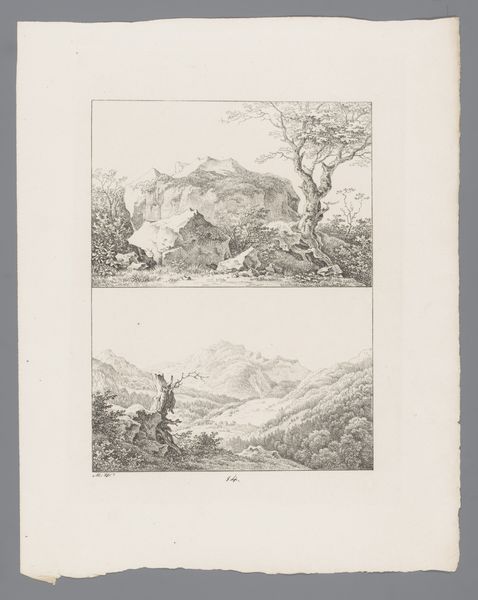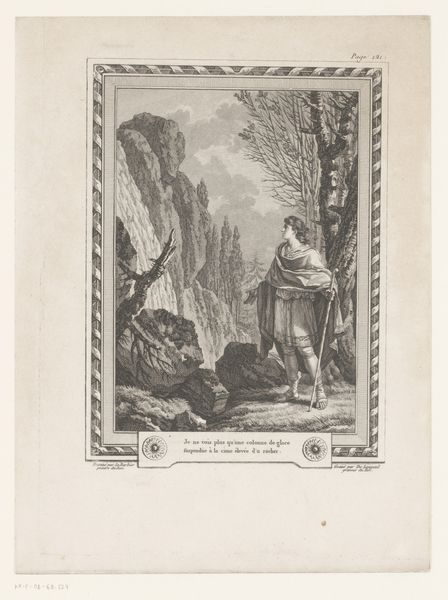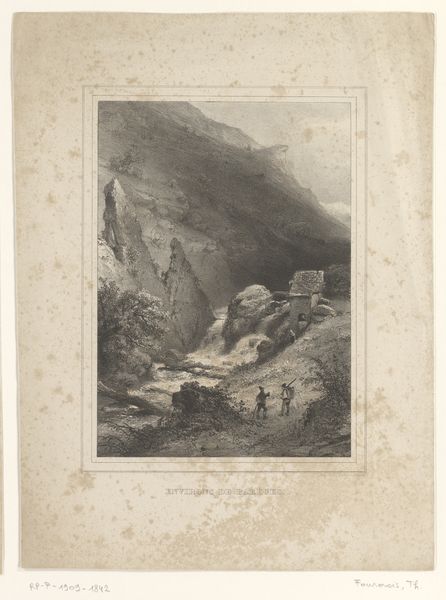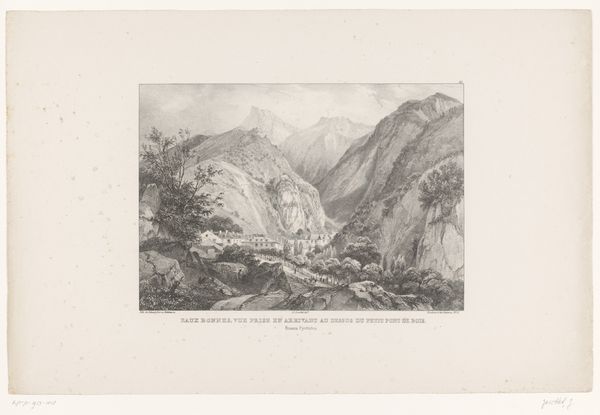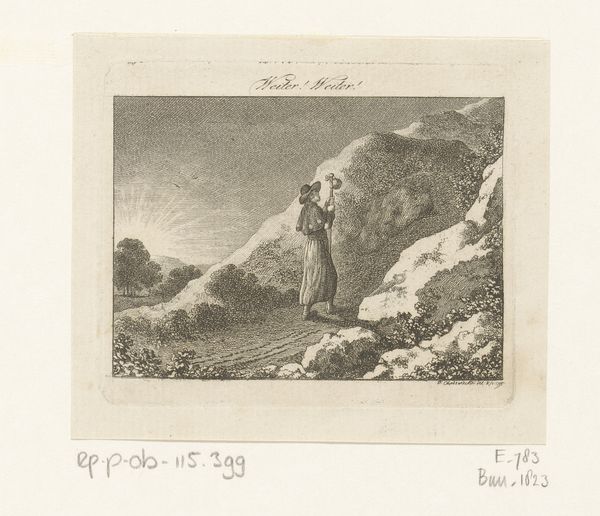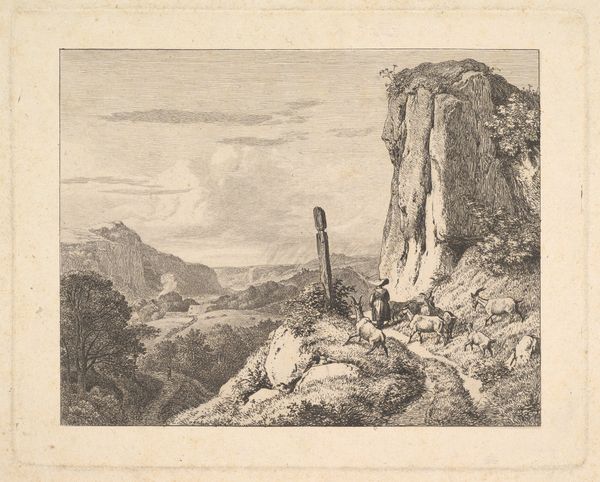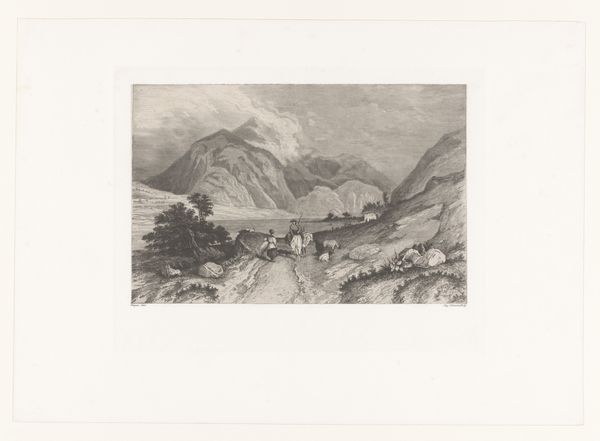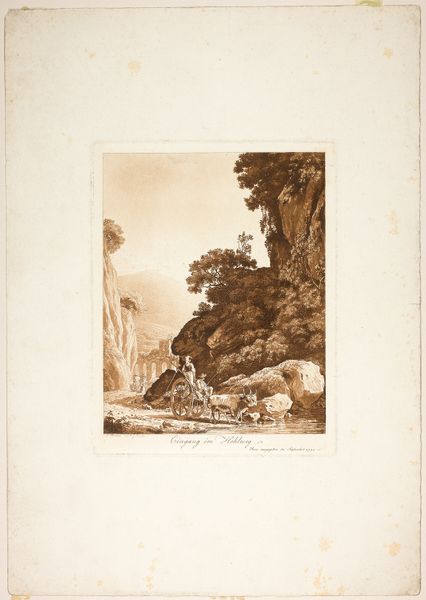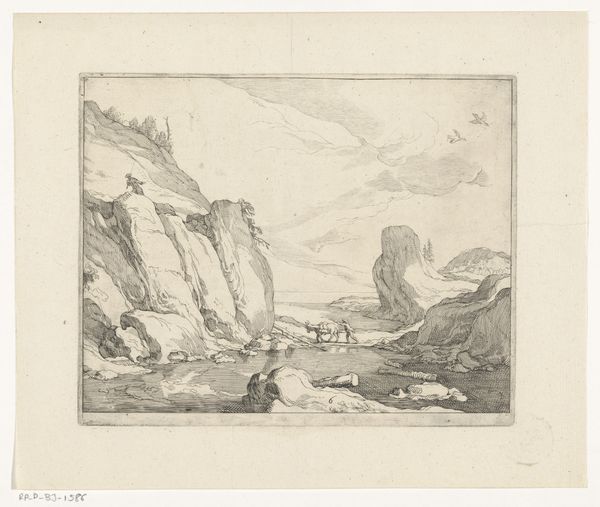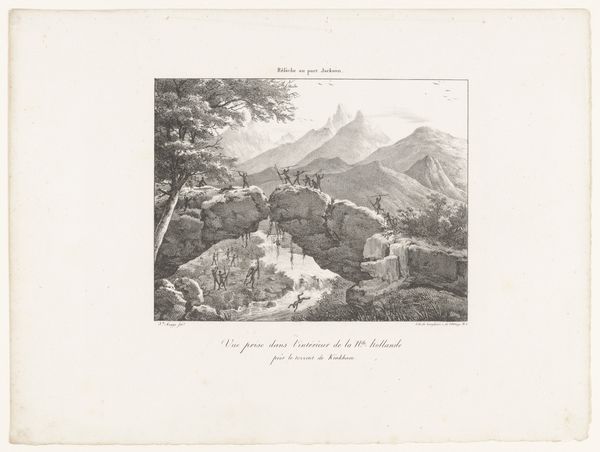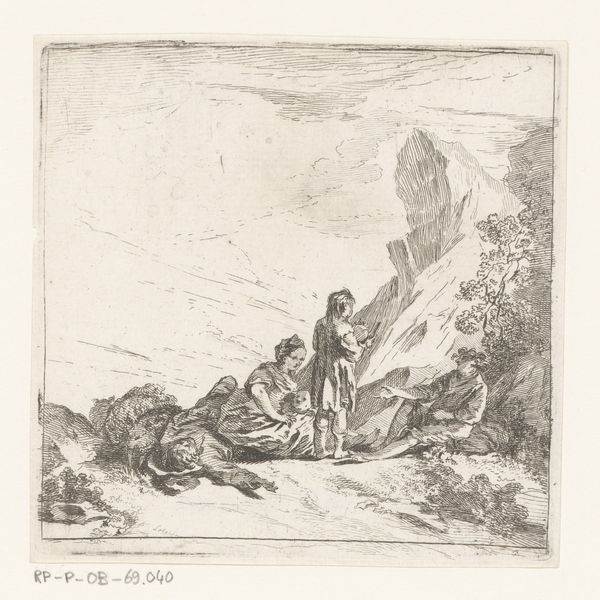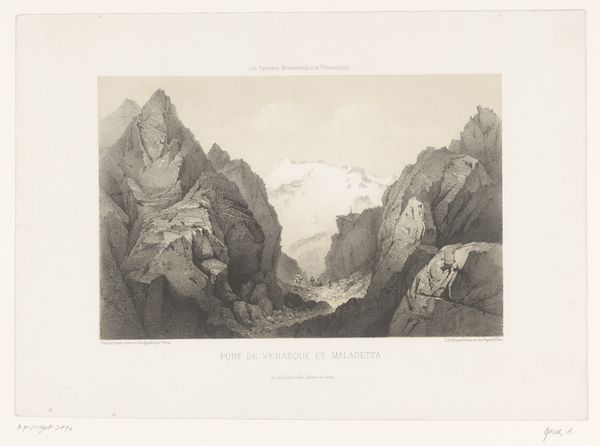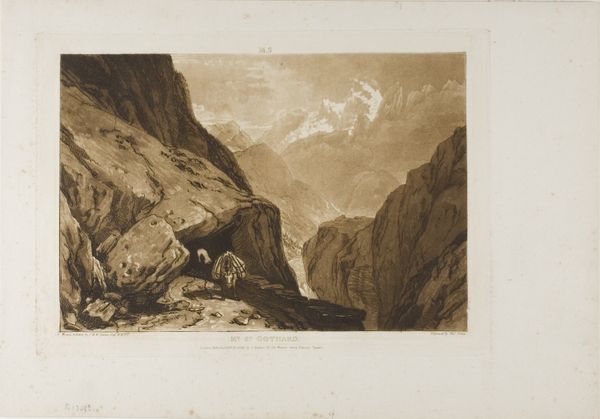
Landschap met bewapende guerrillastrijder en een dode 1837
0:00
0:00
print, etching
#
pencil drawn
#
narrative-art
# print
#
etching
#
old engraving style
#
landscape
#
etching
#
figuration
#
road
#
romanticism
#
mountain
Dimensions: height 178 mm, width 178 mm
Copyright: Rijks Museum: Open Domain
Editor: So, this is "Landscape with Armed Guerrilla Fighter and a Dead Man" by Nicolas Toussaint Charlet, an etching from 1837. It’s a stark image. There’s a body lying on the ground and a figure standing nearby, surrounded by a somewhat desolate landscape. It makes me think of conflict, naturally, but I'm curious how else to interpret it. What do you see in this piece? Curator: It's more than just conflict; it's about the social realities of conflict. Consider the term "guerrilla"— these weren't uniformed soldiers in a grand war. They were often marginalized people fighting for autonomy, for their land, their survival, against established power structures. How does Charlet’s romanticized style perhaps sanitize the brutal reality of such struggles, placing the drama of a man against landscape over the complexities of political strife and the experience of loss? Editor: I see what you mean. The landscape is almost... monumental, which contrasts with the vulnerability of the dead figure. Does that contrast say something about the relative powerlessness of the individual? Curator: Precisely. And look closer at the surviving guerrilla. What do you notice about his pose, his clothing? They aren't those of a general or aristocrat, right? Charlet highlights this “common” figure. But in what ways does the image uphold existing ideas about class, war, and resistance while presenting a story of conflict? Does his determined stance, his almost theatrical defiance, serve a specific ideological purpose for its original audience? Editor: I hadn’t considered the intended audience. Thinking about it now, I suppose a romanticized depiction of a commoner as a heroic figure would be pretty inspiring to a certain class of people in 1837... Thank you, this puts the print in a totally new context! Curator: And it reminds us that art isn't created in a vacuum. Exploring these historical and social dimensions lets us see how art reflects and shapes the world around it.
Comments
No comments
Be the first to comment and join the conversation on the ultimate creative platform.
